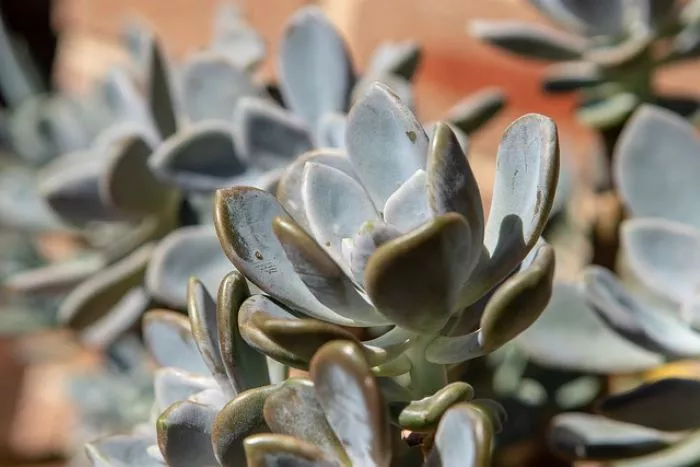Creating the right soil mix is essential for the health and growth of succulents. These unique plants thrive in well-draining soil that mimics their natural habitat. In this article, we will explore how to mix succulent soil effectively. We will cover the necessary components, the mixing process, and tips for maintaining the right conditions for your succulents.
Understanding Succulent Soil Needs
Succulents are adapted to arid environments where water drains quickly. Their roots are susceptible to rot if they sit in overly moist soil. A suitable soil mix provides excellent drainage while retaining enough moisture to support growth. Understanding the specific needs of succulents is the first step in creating the perfect soil mix.
Essential Components of Succulent Soil
A well-balanced succulent soil mix typically consists of three main components. Each component plays a crucial role in ensuring proper drainage and aeration.
Base Soil: The base soil provides the necessary nutrients for succulents. A standard potting soil can serve as the base. However, it is essential to choose a high-quality mix that is lightweight and free from additives that retain moisture.
Drainage Material: The drainage material is critical for preventing water retention. Common options include perlite, pumice, and coarse sand. These materials create air pockets in the soil, allowing excess water to escape quickly.
Organic Matter: While succulents do not require a lot of organic matter, adding a small amount can help improve soil structure. Ingredients like coconut coir or well-rotted compost can enhance nutrient availability without compromising drainage.
Choosing the Right Ingredients
Selecting the right ingredients for your succulent soil mix is vital for success. Here are some common options and their benefits.
Potting Soil: Choose a lightweight, fast-draining potting soil. Avoid mixes that contain moisture-retaining ingredients like vermiculite or peat moss. These can lead to soggy conditions.
Perlite: This volcanic glass is an excellent drainage material. It is lightweight and helps aerate the soil, promoting healthy root growth.
Pumice: Similar to perlite, pumice is a lightweight volcanic rock that provides excellent drainage. It retains some moisture and nutrients, making it a great addition to succulent soil.
Coarse Sand: Coarse sand improves drainage and adds texture to the soil mix. Avoid fine sand, as it can compact and hinder drainage.
Coconut Coir: This organic material is derived from coconut husks. It retains some moisture while allowing excess water to drain. Use it in moderation to prevent the soil from becoming too dense.
Mixing the Soil
Now that you have gathered your ingredients, it is time to mix the soil. Follow these steps for an effective mix.
Gather Your Tools: You will need a mixing container, a trowel or shovel, and a measuring cup for accuracy.
Determine Ratios: A common ratio for succulent soil is two parts base soil to one part drainage material. For example, you can mix two cups of potting soil with one cup of perlite or pumice. Adjust the ratios based on the specific needs of your succulents.
Combine the Ingredients: In your mixing container, combine the base soil and drainage material. Use your trowel to mix thoroughly, ensuring even distribution.
Add Organic Matter: If you choose to include organic matter, add it at this stage. A small amount, such as one part organic matter to the mix, is sufficient.
Mix Again: After adding the organic matter, mix the soil thoroughly to ensure all components are well integrated. The final mixture should be light and crumbly.
Testing the Soil Mix
Before using your new soil mix, it is a good idea to test its drainage properties. Here’s how to do it.
Fill a Pot: Take a small pot with drainage holes and fill it with your soil mix.
Water the Soil: Gently water the soil until it is evenly moist but not soggy.
Observe Drainage: Allow the pot to sit for a few minutes. Check if excess water drains out of the bottom. If water pools on the surface or drains too slowly, you may need to adjust your mix by adding more drainage material.
Storing Excess Soil Mix
If you have leftover soil mix, store it properly to maintain its quality. Here are some tips for storage.
Use a Sealed Container: Store the soil mix in a clean, airtight container to prevent contamination and moisture loss.
Keep It Dry: Store the container in a cool, dry place away from direct sunlight. This will help preserve the quality of the soil mix.
Label the Container: If you mix different types of soil, label the containers to avoid confusion later.
Maintaining Soil Quality
Once you have mixed and used your succulent soil, it is essential to maintain its quality over time. Here are some tips for keeping your soil in good condition.
Replenish Nutrients: Succulents do not require frequent fertilization, but replenishing nutrients every few months can be beneficial. Use a diluted, balanced fertilizer during the growing season.
Avoid Compaction: Over time, soil can compact, reducing drainage. If you notice poor drainage, consider repotting your succulents with fresh soil mix.
Check for Pests: Regularly inspect your soil for pests such as gnats or root mealybugs. If you find any, treat them promptly to prevent infestations.
Monitor Moisture Levels: Keep an eye on the moisture levels in your pots. Adjust your watering schedule based on the season and the specific needs of your succulents.
Conclusion
Mixing succulent soil is a fundamental skill for any succulent enthusiast. By understanding the needs of succulents and selecting the right components, you can create a soil mix that promotes healthy growth. Remember to test your mix for drainage and maintain its quality over time. With the right soil, your succulents will thrive, bringing beauty and joy to your home or garden. Embrace the art of soil mixing and watch your succulent collection flourish.


